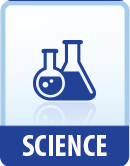|
This section contains 222 words (approx. 1 page at 300 words per page) |

|
autoimmune diseases: Illnesses that occur when the body's immune system attacks its own tissues.
biological weapons: Bacteria, viruses, or toxic substances produced by living organisms, used to intentionally harm plants, animals, or humans.
capsule: A gel or slime layer that covers the surface of some bacteria; when present on disease-causing organisms, it makes them more deadly.
edema: Swelling caused by an abnormal accumulation of fluid in the body tissues.
enzyme: A protein molecule that assists and speeds up chemical reactions.
fluorescence: The emission of light from a substance in response to radiation (such as light) from an outside source.
formaldehyde: A chemical substance used as an antiseptic, disinfectant, and preservative for living tissues.
germinate: To sprout or begin to grow.
immune system: The body system that defends the body against infection, disease, and foreign substances.
nonvirulent microorganisms: Organisms that are unable to cause disease or injury.
septicemia: A...
|
This section contains 222 words (approx. 1 page at 300 words per page) |

|




